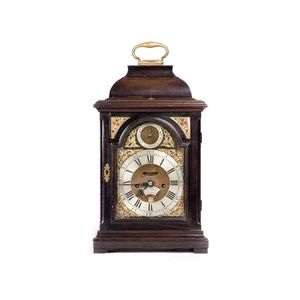Tempus Fugile Pendulum Clock
You must be a subscriber, and be logged in to view price and dealer details.
Subscribe Now to view actual auction price for this item
When you subscribe, you have the option of setting the currency in which to display prices to $Au, $US, $NZ or Stg.
- Pendulum - The pendulum was discovered around 1602 by Galileo Galilei, and was adopted for time keeping by the Dutch mathematician and natural philosopher, Christiaan Huygens, who excelled in astronomy, physics, and horology.
The pendulum comprises a metal rod usually of brass or steel with a metal disk, known as a bob, at the end. The movement of the pendulum is driven by weights or a spring, and as a pendulum swings in a regular arc, it was found accuracy could be controlled to within a few seconds a week.
Timekeeping can be adjusted by changing the height of the bob on the rod, making the pendulum either swing slower or faster.
The disadvantage of the pendulum was that changes in temperature also changed the length of the pendulum, interfering with the accuracy of the clock, and so in the 18th century two types of mercurial pendulums were invented which countered the movement in the steel rod.
The pendulum was the world's most accurate timekeeping technology until the invention of the quartz clock, regulated by a quartz crystal, in 1927.
This item has been included into following indexes:
Visually similar items

A fine and rare ebony veneered striking bracket clock with pull quarter repeat, Henry Jones, London, circa 1685, (3) the domed caddy top with cast 'Quare-style' handle set on internal pommels, over pierced foliate mounts to all four sides, with a turned fi

Rare Langley Bradley of London bracket clock, circa 1710, ebonized pagoda topped case, with brass carry handle, three train fusee movement with six pillars, with seven bells, quarter chiming, hour strike, visible false pendulum, engraved Bradley London and

A black lacquered bracket clock, English, 18th century, with a strike and silent dial escapement to the centre of the dial and calendar aperture to the base, brass dial marker 'Ferdinand Vigne, London', 44 cm high, 25 cm wide and 18 cm deep

A fine Scottish George III bracket clock by James Nicoll Canongate Edinburgh, circa 1770. The double fusee bracket clock with verge escapement and pull repeat, housed within a black lacquer case with glazed sides and back, the bell top surmounted with bras
